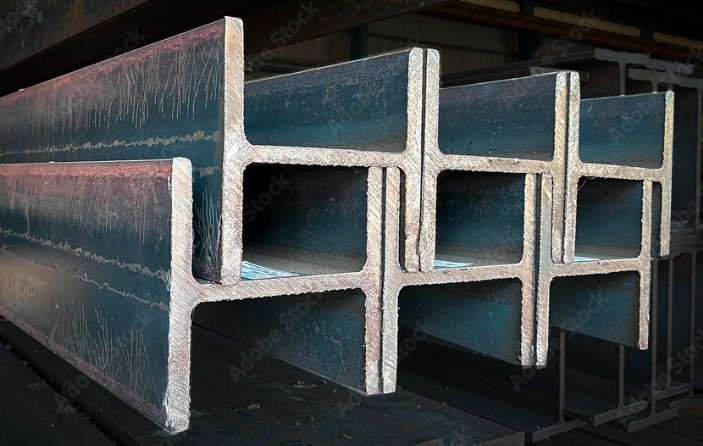In the realm of construction and engineering, H-beams stand as a fundamental component, offering structural integrity and versatility across a multitude of projects. From skyscrapers to bridges, these beams play a pivotal role in supporting heavy loads and maintaining stability. But what exactly are H-beams, and what are they used for?
What are H-Beams?
H-beams, also known as H-sections, are structural steel beams with an "H" shaped cross-section. They are characterized by their distinctive shape, featuring wider flanges and a narrower web compared to I-beams, resulting in a stronger and sturdier design. This configuration enables H-beams to withstand heavier loads and provide superior resistance to bending and twisting forces.

Applications of H-Beams:
1. Construction of Buildings:
H-beams are extensively used in the construction industry for framing structures such as commercial buildings, residential complexes, and industrial facilities. Their high strength-to-weight ratio makes them ideal for supporting the weight of floors, roofs, and walls, allowing architects and engineers to design larger and taller structures with enhanced stability.
2. Bridge Construction:
In bridge construction, H-beams are employed to create robust support structures capable of withstanding the immense weight of vehicular and pedestrian traffic. These beams serve as the primary load-bearing elements, ensuring the structural integrity and longevity of bridges across rivers, highways, and railways.
3. Manufacturing and Industrial Applications:
Within manufacturing and industrial settings, H-beams find application in various equipment and machinery, providing structural support for conveyors, cranes, platforms, and other heavy-duty installations. Their durability and load-bearing capacity make them indispensable in environments where precision and reliability are paramount.
4. Marine Engineering:
In marine engineering, H-beams are utilized for constructing docks, piers, and offshore platforms. Their corrosion-resistant properties, coupled with their ability to withstand harsh marine environments, make them an excellent choice for maritime infrastructure projects, ensuring long-term durability and safety.
5. Automotive and Railway Infrastructure:
H-beams play a crucial role in the construction of automotive assembly plants, warehouses, and railway depots. They form the backbone of these structures, supporting heavy machinery and facilitating efficient workflow processes in manufacturing and transportation industries.
Benefits of H-Beams:
- High Strength: H-beams offer superior strength and durability, making them capable of supporting heavy loads without buckling or deforming.
- Versatility: Their versatile design allows for a wide range of applications across various industries, providing structural solutions for diverse project requirements.
- Cost-Effective: Despite their robustness, H-beams are cost-effective compared to other structural materials, offering excellent value for money in construction projects.
- Ease of Installation: H-beams are relatively easy to install and integrate into existing structures, reducing construction time and labor costs.
- Longevity: Due to their resistance to corrosion, wear, and fatigue, H-beams boast a long service life, ensuring prolonged structural integrity and minimal maintenance requirements.
In conclusion, H-beams are indispensable components in the realm of construction and engineering, offering unparalleled strength, versatility, and reliability. Whether in skyscrapers, bridges, or industrial facilities, these beams continue to shape the built environment, supporting innovation and progress across various sectors.








